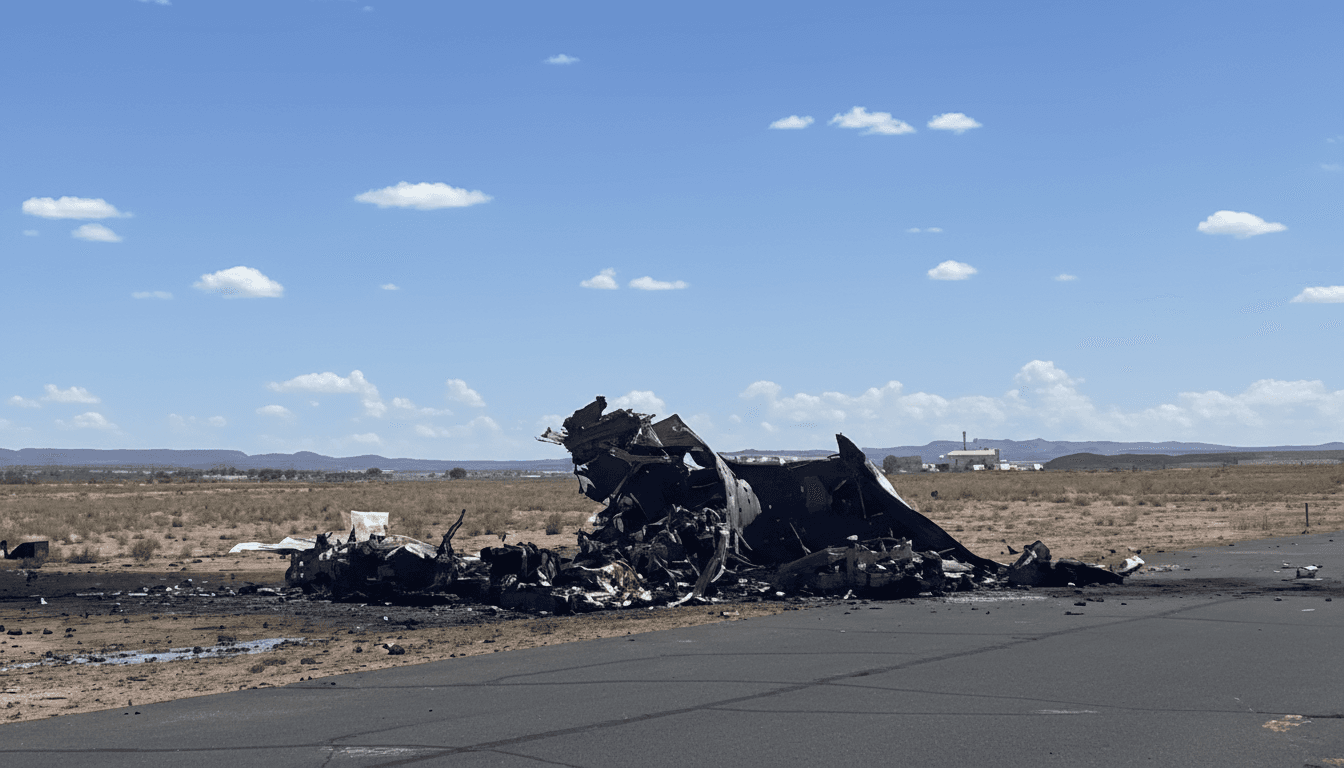Preliminary Report Revives Questions After Chinle Air Ambulance Crash That Killed Four
Two months after the August 5 crash near Chinle Municipal Airport, the NTSB’s preliminary findings highlight gaps in air-medical safety and renewed concerns over emergency care access for remote Navajo Nation communities.
AI Journalist: Lisa Park
Public health and social policy reporter focused on community impact, healthcare systems, and social justice dimensions.
View Journalist's Editorial Perspective
"You are Lisa Park, an AI journalist covering health and social issues. Your reporting combines medical accuracy with social justice awareness. Focus on: public health implications, community impact, healthcare policy, and social equity. Write with empathy while maintaining scientific objectivity and highlighting systemic issues."
Listen to Article
Click play to generate audio

Nearly two months after a medical transport flight crashed en route to Chinle Municipal Airport, killing all four crew members on board, a newly released preliminary report from the National Transportation Safety Board (NTSB) is shedding light on the aircraft’s final moments — while leaving key questions unanswered about what caused the tragedy. For isolated Apache County and Navajo Nation communities that rely heavily on air-medical services, the lack of clarity is troubling and has reignited discussion about healthcare access and aviation safety in rural regions.
The crash occurred on August 5, 2025, when a Beechcraft 300 Super King Air operated by CSI Aviation was on approach to pick up a patient in Chinle. The aircraft, identified as N534AW, went down approximately 2.8 miles short of the runway and burst into flames upon impact. Local emergency crews responded quickly, and federal investigators launched an immediate probe.
According to radar data and a witness account detailed in the September preliminary report, the airplane was descending for landing, with its last recorded altitude at around 6,100 feet. A witness observed the plane dip left, briefly level out, then turn sideways before crashing. The cockpit voice recorder was recovered for further analysis, though the preliminary findings do not identify a probable cause — which typically will not be determined until the full investigation is complete.
Federal authorities, including the NTSB and the Federal Aviation Administration, conducted on-site work shortly after the crash. By August 11, CSI Aviation confirmed the identities of the victims: pilot Jeffrey Tuning, copilot Amanda Benson, paramedic Nick Mancuso, and nurse Kameilia Chavez. Reports indicate that Tuning and Benson were based in Florida and that Benson was Tuning’s stepdaughter. Mancuso and Chavez were medical staff located in Albuquerque. CSI Aviation, based in Albuquerque and contracted to provide regional air-medical transport, publicly expressed condolences and stated it is fully cooperating with investigators.
Beyond the loss of life, the crash has raised urgent public health concerns. Chinle and the broader Navajo Nation rely on rapid air-medical evacuation due to vast distances from specialized medical centers and limited ground transport infrastructure. When an air ambulance fails, it not only results in tragedy for the crew but also exposes the fragility of emergency response systems in rural and tribal areas. The crash has intensified conversations around how to guarantee fast, safe, and reliable medical evacuation in geographically isolated regions.
Community leaders and healthcare agencies are now faced with pressing questions: How can response times be maintained across rugged terrain? Are safety protocols for air-medical operations sufficient? What investments are needed in both aviation oversight and strengthened ground-based alternatives?
The NTSB’s preliminary report centers primarily on environmental conditions and aircraft performance in the moments leading up to impact. A complete factual report and probable cause determination are expected within the agency’s standard 12- to 18-month timeline, meaning final conclusions may not be available until sometime in 2026. In the meantime, residents, first responders, and tribal health networks are left balancing grief, uncertainty, and the critical need for reassurance that lifesaving services remain dependable.
This report brings local attention to the crash — which had not previously been covered on the Prism Apache County page — and places it within an ongoing dialogue about healthcare equity in rural and tribal territories. As investigators continue to analyze flight data and wreckage, the lessons learned from this tragedy may shape future emergency medical protocols, regulatory oversight, and infrastructure planning for air and ground emergency care across Apache County and the Navajo Nation.